| Part of the Politics series |
| Basic forms of government |
|---|
| List of forms of government |
|
|
A protectorate, in the context of international relations, is a state that is under protection by another state for defence against aggression and other violations of law.[1] It is a dependent territory that enjoys autonomy over most of its internal affairs, while still recognizing the suzerainty of a more powerful sovereign state without being a possession.[2][3][4] In exchange, the protectorate usually accepts specified obligations depending on the terms of their arrangement.[4] Usually protectorates are established de jure by a treaty.[2][3] Under certain conditions—as with Egypt under British rule (1882–1914)—a state can also be labelled as a de facto protectorate or a veiled protectorate.[5][6][7]
A protectorate is different from a colony as it has local rulers, is not directly possessed, and rarely experiences colonization by the suzerain state.[8][9] A state that is under the protection of another state while retaining its "international personality" is called a "protected state", not a protectorate.[10][lower-alpha 1]
History
Protectorates are one of the oldest features of international relations, dating back to the Roman Empire. Civitates foederatae were cities that were subordinate to Rome for their foreign relations. In the Middle Ages, Andorra was a protectorate of France and Spain. Modern protectorate concepts were devised in the nineteenth century.[11]
Typology
Foreign relations
In practice, a protectorate often has direct foreign relations only with the protector state, and transfers the management of all its more important international affairs to the latter.[12][4][2][3] Similarly, the protectorate rarely takes military action on its own but relies on the protector for its defence. This is distinct from annexation, in that the protector has no formal power to control the internal affairs of the protectorate.
Protectorates differ from League of Nations mandates and their successors, United Nations Trust Territories, whose administration is supervised, in varying degrees, by the international community. A protectorate formally enters into the protection through a bilateral agreement with the protector, while international mandates are stewarded by the world community-representing body, with or without a de facto administering power.
Protected state
A protected state has a form of protection where it continues to retain an "international personality" and enjoys an agreed amount of independence in conducting its foreign policy.[10][13]
For political and pragmatic reasons, the protection relationship is not usually advertised, but described with euphemisms such as "an independent state with special treaty relations" with the protecting state.[14] A protected state appears on world maps just as any other independent state.[lower-alpha 1]
International administration of a state can also be regarded as an internationalized form of protection, where the protector is an international organisation rather than a state.[15]
Colonial protection
Multiple regions—such as the Colony and Protectorate of Nigeria, the Colony and Protectorate of Lagos, and similar—were subjects of colonial protection.[16][17] Conditions of protection are generally much less generous for areas of colonial protection. The protectorate was often reduced to a de facto condition similar to a colony, but with the pre-existing native state continuing as the agent of indirect rule. Occasionally, a protectorate was established by another form of indirect rule: a chartered company, which becomes a de facto state in its European home state (but geographically overseas), allowed to be an independent country with its own foreign policy and generally its own armed forces.
In fact, protectorates were often declared despite no agreement being duly entered into by the state supposedly being protected, or only agreed to by a party of dubious authority in those states. Colonial protectors frequently decided to reshuffle several protectorates into a new, artificial unit without consulting the protectorates, without being mindful of the theoretical duty of a protector to help maintain a protectorate's status and integrity. The Berlin agreement of February 26, 1885, allowed European colonial powers to establish protectorates in Black Africa (the last region to be divided among them) by diplomatic notification, even without actual possession on the ground. This aspect of history is referred to as the Scramble for Africa. A similar case is the formal use of such terms as colony and protectorate for an amalgamation—convenient only for the colonizer or protector—of adjacent territories, over which it held (de facto) sway by protective or "raw" colonial power.
Amical protection
In amical protection—as of United States of the Ionian Islands by Britain—the terms are often very favourable for the protectorate.[18][19] The political interest of the protector is frequently moral (a matter of accepted moral obligation, prestige, ideology, internal popularity, or dynastic, historical, or ethnocultural ties). Also, the protector's interest is in countering a rival or enemy power—such as preventing the rival from obtaining or maintaining control of areas of strategic importance. This may involve a very weak protectorate surrendering control of its external relations but may not constitute any real sacrifice, as the protectorate may not have been able to have a similar use of them without the protector's strength.
Amical protection was frequently extended by the great powers to other Christian (generally European) states, and to states of no significant importance. After 1815, non-Christian states (such as the Chinese Qing dynasty) also provided amical protection of other, much weaker states.
In modern times, a form of amical protection can be seen as an important or defining feature of microstates. According to the definition proposed by Dumienski (2014): "microstates are modern protected states, i.e. sovereign states that have been able to unilaterally depute certain attributes of sovereignty to larger powers in exchange for benign protection of their political and economic viability against their geographic or demographic constraints".[20]
Argentina's protectorates
 Liga Federal (1815–1820)
Liga Federal (1815–1820).svg.png.webp) Peru (1820–1822)
Peru (1820–1822) Riograndense Republic (1836–1845)
Riograndense Republic (1836–1845).svg.png.webp) Juliana Republic (1839–1845)
Juliana Republic (1839–1845).svg.png.webp) Gobierno del Cerrito (1843–1851)
Gobierno del Cerrito (1843–1851) Paraguay (1876)
Paraguay (1876)
De facto
 Republic of Tucumán (1820–1821)
Republic of Tucumán (1820–1821) National Territory of Misiones (1865–1954)
National Territory of Misiones (1865–1954) National Territory of the Gran Chaco (1874–1884)
National Territory of the Gran Chaco (1874–1884) National Territory of the Patagonia (1878–1884)
National Territory of the Patagonia (1878–1884) National Territory of the Tierra del Fuego, Antarctica and South Atlantic Islands (1884–1991)
National Territory of the Tierra del Fuego, Antarctica and South Atlantic Islands (1884–1991)
Brazil's protectorates
 Republic of Acre (1899—1903)
Republic of Acre (1899—1903)- Paraguay (1869—1876)
- Uruguay (1828—1835)
British Empire's protectorates and protected states
Americas
Europe

.svg.png.webp) Malta Protectorate (1800–1813);
Malta Protectorate (1800–1813);  Crown Colony of Malta proclaimed in 1813) (de jure part of the Kingdom of Sicily but under British protection)
Crown Colony of Malta proclaimed in 1813) (de jure part of the Kingdom of Sicily but under British protection) Ionian islands (1815–1864) (a Greek state and amical protectorate of Great Britain between 1815 and 1864)
Ionian islands (1815–1864) (a Greek state and amical protectorate of Great Britain between 1815 and 1864).svg.png.webp) British Cyprus (1871–1914) (put under British military administration 1914–22 then proclaimed a Crown Colony 1922–60)
British Cyprus (1871–1914) (put under British military administration 1914–22 then proclaimed a Crown Colony 1922–60)
South Asia
.svg.png.webp) Cis-Sutlej states[21][22] (1809–1862)
Cis-Sutlej states[21][22] (1809–1862) Kingdom of Sikkim (1861–1947)[23]
Kingdom of Sikkim (1861–1947)[23] Maldive Islands (1887–1965)[24]
Maldive Islands (1887–1965)[24].svg.png.webp) Emirate of Afghanistan (1879–1919; protected state)[14]
Emirate of Afghanistan (1879–1919; protected state)[14].svg.png.webp) Bhutan (1910–1947; protected state)[14]
Bhutan (1910–1947; protected state)[14]
Western Asia
 British Residency of the Persian Gulf (1822–1971); headquarters based in Bushire, Persia
British Residency of the Persian Gulf (1822–1971); headquarters based in Bushire, Persia
.svg.png.webp) Bahrain, protected state (1880–1971)[14]
Bahrain, protected state (1880–1971)[14] Sheikhdom of Kuwait, protected state (1899–1961)[14]
Sheikhdom of Kuwait, protected state (1899–1961)[14].svg.png.webp) Qatar, protected state (1916–1971)
Qatar, protected state (1916–1971).svg.png.webp) Trucial States; precursor state of the UAE, protected states (1892–1971)[14]
Trucial States; precursor state of the UAE, protected states (1892–1971)[14]
 Abu Dhabi (1820–1971)
Abu Dhabi (1820–1971) Ajman (1820–1971)
Ajman (1820–1971) Dubai (1835–1971)
Dubai (1835–1971).svg.png.webp) Fujairah (1952–1971)
Fujairah (1952–1971) Ras Al Khaimah (1820–1971)
Ras Al Khaimah (1820–1971) Sharjah (1820–1971)
Sharjah (1820–1971)
 Kalba (1936–1951)
Kalba (1936–1951)
 Umm al-Qaiwain (1820–1971)
Umm al-Qaiwain (1820–1971)
 Muscat and Oman (1892–1971; informal, protected state)[25][26]
Muscat and Oman (1892–1971; informal, protected state)[25][26]
 Aden Protectorate (1872–1963); precursor state of South Yemen[27]
Aden Protectorate (1872–1963); precursor state of South Yemen[27]
- Eastern Protectorate States (mostly in Haudhramaut); later the Protectorate of South Arabia (1963–1967)
- Western Protectorate States; later the Federation of South Arabia (1959/1962–1967), including Aden Colony
 Wahidi Sultanates (these included: Balhaf, Azzan, Bir Ali, and Habban)
Wahidi Sultanates (these included: Balhaf, Azzan, Bir Ali, and Habban) Beihan
Beihan Dhala and Qutaibi
Dhala and Qutaibi Fadhli
Fadhli Lahej
Lahej Lower Yafa
Lower Yafa Audhali
Audhali Haushabi
Haushabi Upper Aulaqi Sheikhdom
Upper Aulaqi Sheikhdom Upper Aulaqi Sultanate
Upper Aulaqi Sultanate Lower Aulaqi
Lower Aulaqi Alawi
Alawi Aqrabi
Aqrabi Dathina
Dathina Shaib
Shaib
Africa

.svg.png.webp) British Somaliland (1884–1960)[27]
British Somaliland (1884–1960)[27] Bechuanaland Protectorate (1885–1966)
Bechuanaland Protectorate (1885–1966) Barotseland Protectorate (1889–1964)
Barotseland Protectorate (1889–1964).svg.png.webp) Nyasaland Protectorate (1893–1964) (
Nyasaland Protectorate (1893–1964) ( British Central Africa Protectorate from 1889 until 1907)
British Central Africa Protectorate from 1889 until 1907).svg.png.webp) Sultanate of Zanzibar (1890–1963)
Sultanate of Zanzibar (1890–1963)- Sultanate of Wituland (1890–1923)
.svg.png.webp) Gambia Colony and Protectorate* (1894–1965)
Gambia Colony and Protectorate* (1894–1965) Uganda Protectorate (1894–1962)
Uganda Protectorate (1894–1962).svg.png.webp) East Africa Protectorate (1895–1920)
East Africa Protectorate (1895–1920).gif) Sierra Leone Protectorate* (1896–1961)
Sierra Leone Protectorate* (1896–1961).svg.png.webp) Nigeria* (1914–1960)
Nigeria* (1914–1960).svg.png.webp) Northern Nigeria Protectorate (1900–1914)
Northern Nigeria Protectorate (1900–1914) Swaziland (1903–1968)
Swaziland (1903–1968).svg.png.webp) Southern Nigeria Protectorate (1900–1914)
Southern Nigeria Protectorate (1900–1914) Northern Territories of the Gold Coast (British protectorate) (1901–1957)
Northern Territories of the Gold Coast (British protectorate) (1901–1957).svg.png.webp) Sultanate of Egypt (1914–1922)
Sultanate of Egypt (1914–1922).svg.png.webp) Kenya Protectorate* (1920–1963)
Kenya Protectorate* (1920–1963).svg.png.webp) Kingdom of Egypt (1922–1936)
Kingdom of Egypt (1922–1936).svg.png.webp) Northern Rhodesia (1924–1964)
Northern Rhodesia (1924–1964)
*protectorates which existed alongside a colony of the same name
De facto
.svg.png.webp) Khediviate of Egypt (1882–1913)
Khediviate of Egypt (1882–1913)
Oceania
 Territory of Papua (1884–1888)
Territory of Papua (1884–1888) Tokelau (1877–1916)
Tokelau (1877–1916) Cook Islands (1888–1893)
Cook Islands (1888–1893).svg.png.webp) Gilbert and Ellice Islands (1892–1916)
Gilbert and Ellice Islands (1892–1916).svg.png.webp) British Solomon Islands (1893–1978)
British Solomon Islands (1893–1978) Niue (1900–1901)
Niue (1900–1901) Tonga (1900–1970)
Tonga (1900–1970)
East and Southeast Asia
.svg.png.webp) British North Borneo (1888–1946)
British North Borneo (1888–1946) Brunei (1888–1984)
Brunei (1888–1984).svg.png.webp) Raj of Sarawak (1888–1946)
Raj of Sarawak (1888–1946) Federation of Malaya (1948–1957)
Federation of Malaya (1948–1957)
.svg.png.webp) Federated Malay States (1895–1946)
Federated Malay States (1895–1946)
 Negeri Sembilan (1888–1895)
Negeri Sembilan (1888–1895)
 Sungai Ujong (1874–1888)
Sungai Ujong (1874–1888) Jelebu (1886–1895)
Jelebu (1886–1895)
 Pahang (1888–1895)
Pahang (1888–1895) Perak (1874–1895)
Perak (1874–1895)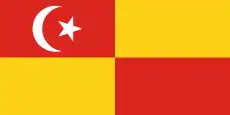 Selangor (1874–1895)
Selangor (1874–1895)
 Unfederated Malay States (1904/09–1946)
Unfederated Malay States (1904/09–1946)
China's protectorates
Dutch Empire's protectorates
Various sultanates in the Dutch East Indies (present day Indonesia):
Sumatra
- Trumon Sultanate (1770?)
- Langkat Sultanate (26 October 1869)
- Deli Sultanate (22 August 1862)
- Asahan Sultanate (27 September 1865)
- Kota Pinang Sultanate (1865 - 1942)
- Siak Sultanate (1 February 1858)
- Indragiri Sultanate (1838?)
Java
- Jogjakarta Sultanate (13 February 1755)
- Mataram Sultanate and Surakarta Sunanate (26 February 1677)
- Duchy of Mangkunegara (24 February 1757)
- Duchy of Paku Alaman (22 June 1812)
Lesser Sunda Islands
- Sumbawa Sultanate (?)
- Bima Sultanate (8 December 1669)
Borneo
- Pontianak Sultanate (16 August 1819)
- Sambas Sultanate (1819)
- Kubu Sultanate (4 June 1823)
- Landak Sultanate (?)
- Mempawah Sultanate (?)
- Matan Sultanate (?)
- Sanggau Sultanate (?)
- Sekadau Sultanate (?)
- Simpang Sultanate (?)
- Sintang Sultanate (1822)
- Sukadana Sultanate (?)
- Kota Waringin Sultanate (?)
- Kutai Kertanegara Sultanate (8 August 1825)
- Gunung Tabur Sultanate (?)
- Bulungan Sultanate (?)
Celebes
- Gowa Sultanate (1669)
- Bone Sultanate (?)
- Sidenreng Sultanate (?)
- Soppeng Sultanate (?)
- Butung Sultanate (?)
- Muna Sultanate (?)
- Banggai Sultanate (?)
The Moluccas
- Ternate Sultanate (12 October 1676)
- Batjan Sultanate (?)
New Guinea
France's protectorates and protected states
Africa
"Protection" was the formal legal structure under which French colonial forces expanded in Africa between the 1830s and 1900. Almost every pre-existing state that was later part of French West Africa was placed under protectorate status at some point, although direct rule gradually replaced protectorate agreements. Formal ruling structures, or fictive recreations of them, were largely retained—as with the low-level authority figures in the French Cercles—with leaders appointed and removed by French officials.[35]
- Benin Traditional States[36]
- Alada (1891-1909)
 Kingdom of Dahomey (1889-1900)
Kingdom of Dahomey (1889-1900)- Kingdom of Dassa (1889-1960?)
- Ketu (1893-1960?)
- Porto-Novo (23 February 1863-2 January 1865; 14 April 1882-7 February 1908)
- Cotonou (19 May 1868-1878)
- Savi Hweda (1892-1898)
- Central African Republic Traditional States[37]:
- Dar al-Kuti (12 December 1897-1900)
- Sultanate of Bangassou (1894-1917)
- Sultanate of Rafai (1909-1939)
- Sultanate of Zemio (1909-1923)
- Burkina Faso Traditional States[38]
- Wogodogo (1896)
- Yatenga (1895-1896)
- Nungu (1895-1896)
- Chad Traditional States[39]
- Baghirmi (20 September 1897-1900)
- Wada'i (1909-1912)
- Côte d'Ivoire
- Ivory Coast (1843-1893)
- Guinea Traditional States
- Fuuta Jaloo [Futa Jallon] (1896-1912)
- Niger Traditional States
- Sultanate of Damagaram (Zinder) (30 July 1899-1906)
- Comoros Traditional States[40]
- Ndzuwani [Anjouan] (21 April 1886-25 July 1912)
- Ngazidja (Grande Comore) (21 April 1886-25 July 1912)
- Mwali (26 April 1886-1909)
- Djibouti[41]
- Sultanate of Gobaad (1884-1932)
- Tadjoura (1884-1896)
- Rahayta (1884-1896)
- Mauritania[42]
- Mauritania (1903-1904)
- Adrar Emirate (9 January 1909-????)
- Taganit Confederation (1905-????)
- Emirate of Trarza (15 December 1902-????)
 Morocco – most of the sultanate was under French protectorate (30 March 1912 – 7 April 1956) although, in theory, it remained a sovereign state under the Treaty of Fez;[43] this fact was confirmed by the International Court of Justice in 1952.[44] The northern part of Morocco was under Spanish protectorate in the same period.
Morocco – most of the sultanate was under French protectorate (30 March 1912 – 7 April 1956) although, in theory, it remained a sovereign state under the Treaty of Fez;[43] this fact was confirmed by the International Court of Justice in 1952.[44] The northern part of Morocco was under Spanish protectorate in the same period.- Traditional Madagascar States[45]
 Kingdom of Imerina (6 August 1896-28 February 1897)
Kingdom of Imerina (6 August 1896-28 February 1897)- Menabe Kingdom (1860-1900?)
- Antankarana (1843-1891)
 Tunisia (12 May 1881 – 20 March 1956)
Tunisia (12 May 1881 – 20 March 1956)
Americas
.svg.png.webp) Second Mexican Empire (1863–1867), established by Emperor Napoleon III during the Second French intervention in Mexico and ruled by the Austrian-born, French puppet monarch Maximilian I
Second Mexican Empire (1863–1867), established by Emperor Napoleon III during the Second French intervention in Mexico and ruled by the Austrian-born, French puppet monarch Maximilian I
Asia
_02.jpg.webp)
Europe
 Rhenish Republic (1923–1924)
Rhenish Republic (1923–1924).svg.png.webp) Saar Protectorate (1946–1956), not colonial or amical, but a former part of Germany that would by referendum return to it, in fact a re-edition of a former League of Nations mandate. Most French protectorates were colonial.
Saar Protectorate (1946–1956), not colonial or amical, but a former part of Germany that would by referendum return to it, in fact a re-edition of a former League of Nations mandate. Most French protectorates were colonial.
Oceania
 French Polynesia, mainly the Society Islands (several others were immediately annexed).[46] All eventually were annexed by 1889.
French Polynesia, mainly the Society Islands (several others were immediately annexed).[46] All eventually were annexed by 1889.
 Wallis and Futuna (protectorates established 1887-1888, annexed 1917):
Wallis and Futuna (protectorates established 1887-1888, annexed 1917):
Germany's protectorates and protected states

The German Empire used the word Schutzgebiet, literally protectorate, for all of its colonial possessions until they were lost during World War I, regardless of the actual level of government control. Cases involving indirect rule included:
 German New Guinea (1884–1920), now part of Papua New Guinea
German New Guinea (1884–1920), now part of Papua New Guinea German South West Africa (1884–1920), present-day Namibia
German South West Africa (1884–1920), present-day Namibia Togoland (1884–1914), now part of Ghana and Togo
Togoland (1884–1914), now part of Ghana and Togo North Solomon Islands (1885–1920), now part of Papua New Guinea and the Solomon Islands
North Solomon Islands (1885–1920), now part of Papua New Guinea and the Solomon Islands Wituland (1885–1890), now part of Kenya
Wituland (1885–1890), now part of Kenya Ruanda-Urundi (1894–1920)
Ruanda-Urundi (1894–1920) German Samoa (1900–1920), present-day Samoa
German Samoa (1900–1920), present-day Samoa Marshall Islands (1885-1888), incorporated into German New Guinea
Marshall Islands (1885-1888), incorporated into German New Guinea Gando Emirate (1895–1897)[48]
Gando Emirate (1895–1897)[48] Gulmu (1895–1897)[48]
Gulmu (1895–1897)[48]
Before and during World War II, Nazi Germany designated the rump of occupied Czechoslovakia and Denmark as protectorates:
 Protectorate of Bohemia and Moravia (1939–1945), however it was also considered a partially annexed territory of Germany
Protectorate of Bohemia and Moravia (1939–1945), however it was also considered a partially annexed territory of Germany Denmark (1940–1943)
Denmark (1940–1943)
India's protectorates
 Bhutan (1947–2007).
Bhutan (1947–2007)..svg.png.webp) Kingdom of Sikkim (1950–1975), later acceded to India as State of Sikkim.[49]
Kingdom of Sikkim (1950–1975), later acceded to India as State of Sikkim.[49]
Italy's protectorates and protected states
 The Albanian Republic (1917–1920) and the
The Albanian Republic (1917–1920) and the .svg.png.webp) Albanian Kingdom (1939–1943)
Albanian Kingdom (1939–1943)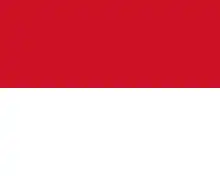 Monaco [under amical Protectorate of the Kingdom of Sardinia] (20 November 1815-1860)
Monaco [under amical Protectorate of the Kingdom of Sardinia] (20 November 1815-1860) Ethiopia : (2 May 1889-1896) [ The Treaty of Wuchale, in the Italian language version, stated that Ethiopia was to become an Italian protectorate, while the Ethiopian Amharic language version merely stated that the Emperor could, if he so chose, go through Italy to conduct foreign affairs. When the differences in the versions came to light, Emperor Menelik II abrogated first the article in question (XVII), and later the whole treaty. The event culminated in the First Italo-Ethiopian War, in which Ethiopia was victorious and defended her sovereignty in 1896].
Ethiopia : (2 May 1889-1896) [ The Treaty of Wuchale, in the Italian language version, stated that Ethiopia was to become an Italian protectorate, while the Ethiopian Amharic language version merely stated that the Emperor could, if he so chose, go through Italy to conduct foreign affairs. When the differences in the versions came to light, Emperor Menelik II abrogated first the article in question (XVII), and later the whole treaty. The event culminated in the First Italo-Ethiopian War, in which Ethiopia was victorious and defended her sovereignty in 1896]..svg.png.webp) Libya: Cyrenica(15 October 1912-17 May 1919).
Libya: Cyrenica(15 October 1912-17 May 1919). Benadir Coast in Somalia: ( 3 August 1889-16 March 1905), changed to
Benadir Coast in Somalia: ( 3 August 1889-16 March 1905), changed to  Italian Somaliland.
Italian Somaliland.
 Majeerteen Sultanate (7 April 1889-1927) (renewed 7 April 1895), then in 1927 incorporated into the Italian colony.
Majeerteen Sultanate (7 April 1889-1927) (renewed 7 April 1895), then in 1927 incorporated into the Italian colony. Sultanate of Hobyo (December 1888-October 1925) (renewed 11 April 1895), then in 1925 incorporated into the Italian colony (known as Obbia).
Sultanate of Hobyo (December 1888-October 1925) (renewed 11 April 1895), then in 1925 incorporated into the Italian colony (known as Obbia).
Japan's protectorates
.svg.png.webp) Korean Empire (1905–1910)
Korean Empire (1905–1910) Manchukuo (1932–1945)
Manchukuo (1932–1945)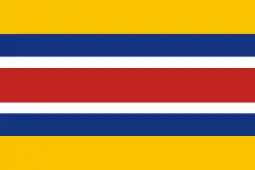 Mengjiang (1939–1945)
Mengjiang (1939–1945)
Poland's protectorates
 Kaffa (1462–1475)
Kaffa (1462–1475)
Portugal's protectorates
- Cabinda (Portuguese Congo) (1885–1974), Portugal first claimed sovereignty over Cabinda in the February 1885 Treaty of Simulambuco, which gave Cabinda the status of a protectorate of the Portuguese Crown under the request of "the princes and governors of Cabinda".
- Kingdom of Kongo (1857–1914)
- Gaza Empire (1824–1895), now part of Mozambique
- Angoche Sultanate (1903–1910)
- Kingdom of Larantuka (1515–1859)
Russia's and the Soviet Union's protectorates and protected states
 Cossack Hetmanate (1654–1764)
Cossack Hetmanate (1654–1764) Kingdom of Kartli-Kakheti (1783–1801)
Kingdom of Kartli-Kakheti (1783–1801) Kingdom of Imereti (1804–1810)
Kingdom of Imereti (1804–1810) Revolutionary Serbia (1807–1812)
Revolutionary Serbia (1807–1812).svg.png.webp) Principality of Serbia (1826–1856), now part of Serbia
Principality of Serbia (1826–1856), now part of Serbia.svg.png.webp) Principality of Moldova (1829–1856), now part of Moldova, Romania and Ukraine
Principality of Moldova (1829–1856), now part of Moldova, Romania and Ukraine Principality of Wallachia (1829–1856)
Principality of Wallachia (1829–1856) Emirate of Bukhara (1873–1920)
Emirate of Bukhara (1873–1920) Khanate of Khiva (1873–1920)
Khanate of Khiva (1873–1920).svg.png.webp) Uryankhay Krai (1914)
Uryankhay Krai (1914) Second East Turkestan Republic (1944–1949), now part of Xinjiang, China
Second East Turkestan Republic (1944–1949), now part of Xinjiang, China
De facto
Some sources mention the following territories as de facto Russian protectorates:
 South Ossetia (2008–present)[50]
South Ossetia (2008–present)[50].svg.png.webp) Transnistria (1992–present)[51]
Transnistria (1992–present)[51]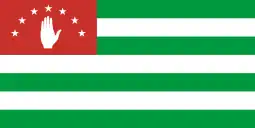 Abkhazia (1994–present)[50]
Abkhazia (1994–present)[50] Donetsk People's Republic (2015–2022)[52]
Donetsk People's Republic (2015–2022)[52] Luhansk People's Republic (2015–2022)[53]
Luhansk People's Republic (2015–2022)[53] Republic of Artsakh (2020–2023)[54][55][56]
Republic of Artsakh (2020–2023)[54][55][56]
Spain's protectorates
 Spanish Morocco protectorate from 27 November 1912 until 2 April 1958 (Northern zone until 7 April 1956, Southern zone (Cape Juby) until 2 April 1958).
Spanish Morocco protectorate from 27 November 1912 until 2 April 1958 (Northern zone until 7 April 1956, Southern zone (Cape Juby) until 2 April 1958). Sultanate of Sulu (1851–1899)
Sultanate of Sulu (1851–1899)- Adrar Emirate (1886-1909)
Turkey's and the Ottoman Empire's protectorates and protected states
 Aceh Sultanate (1569–1903)
Aceh Sultanate (1569–1903)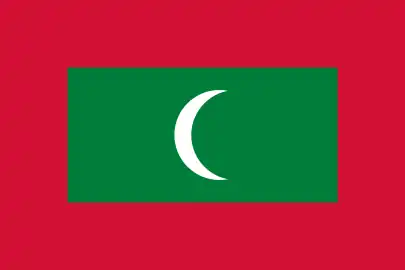 Maldives (1560–1590)
Maldives (1560–1590) Cossack Hetmanate (1669–1685)
Cossack Hetmanate (1669–1685)
De facto
 Northern Cyprus (1983–present)
Northern Cyprus (1983–present)
United Nations' protectorates
 United Nations Transitional Administration in East Timor (1999–2002)[57][58]
United Nations Transitional Administration in East Timor (1999–2002)[57][58] United Nations Transitional Authority in Cambodia (1992–1993)
United Nations Transitional Authority in Cambodia (1992–1993)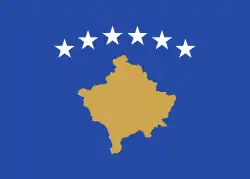 United Nations Interim Administration Mission in Kosovo (1999–present)
United Nations Interim Administration Mission in Kosovo (1999–present)
(only de jure since 2008) United Nations Temporary Executive Authority (1962–1963)
United Nations Temporary Executive Authority (1962–1963) United Nations Transitional Administration for Eastern Slavonia, Baranja and Western Sirmium (1996–1998)
United Nations Transitional Administration for Eastern Slavonia, Baranja and Western Sirmium (1996–1998)
United States' protectorates and protected states
After becoming independent nations in 1902 and 1903 respectively, Cuba and Panama became protectorates of the United States. In 1903, Cuba and the U.S. signed the Cuban–American Treaty of Relations, which affirmed the provisions of the Platt Amendment, including that the U.S. had the right to intervene in Cuba to preserve its independence, among other reasons (the Platt Amendment had also been integrated into the 1901 constitution of Cuba). Later that year, Panama and the U.S. signed the Hay–Bunau-Varilla Treaty, which established the Panama Canal Zone and gave the U.S. the right to intervene in the cities of Panama and Colón (and the adjacent territories and harbors) for the maintenance of public order. The 1904 constitution of Panama, in Article 136, also gave the U.S. the right to intervene in any part of Panama "to reestablish public peace and constitutional order." Haiti later also became a protectorate after the ratification of the Haitian–American Convention (which gave the U.S. the right to intervene in Haiti for a period of ten years, which was later expanded to twenty years through an additional agreement in 1917) on September 16, 1915.
Contemporary usage by the United States
Some agencies of the United States government, such as the Environmental Protection Agency, refer to the District of Columbia and insular areas of the United States—such as American Samoa and the U.S. Virgin Islands—as protectorates.[61] However, the agency responsible for the administration of those areas, the Office of Insular Affairs (OIA) within the United States Department of Interior, uses only the term "insular area" rather than protectorate.
Joint protectorates
 Republic of Ragusa (1684–1798), a joint Habsburg Austrian–Ottoman Turkish protectorate
Republic of Ragusa (1684–1798), a joint Habsburg Austrian–Ottoman Turkish protectorate- The
 United States of the Ionian Islands and the
United States of the Ionian Islands and the  Septinsular Republic were federal republics of seven formerly Venetian (see Provveditore) Ionian Islands (Corfu, Cephalonia, Zante, Santa Maura, Ithaca, Cerigo, and Paxos), officially under joint protectorate of the allied Christian powers, de facto a British amical protectorate from 1815 to 1864.
Septinsular Republic were federal republics of seven formerly Venetian (see Provveditore) Ionian Islands (Corfu, Cephalonia, Zante, Santa Maura, Ithaca, Cerigo, and Paxos), officially under joint protectorate of the allied Christian powers, de facto a British amical protectorate from 1815 to 1864. 
.svg.png.webp) Anglo-Egyptian Sudan (1899–1956)
Anglo-Egyptian Sudan (1899–1956).svg.png.webp) Independent State of Croatia (1941–1943)
Independent State of Croatia (1941–1943).svg.png.webp) Allied-occupied Germany (1945–1949)
Allied-occupied Germany (1945–1949) Allied-occupied Austria (1945–1955)
Allied-occupied Austria (1945–1955)
See also
- British Protected Person
- Client state
- European Union Police Mission in Bosnia and Herzegovina
- EUFOR Althea
- High Representative for Bosnia and Herzegovina
- League of Nations mandate
- Peace Implementation Council
- Protector (titles for Heads of State and other individual persons)
- Protectorate (imperial China)
- Timeline of national independence
- Tribute
Notes
References
- ↑ Hoffmann, Protectorates (1987), p. 336.
- 1 2 3 Fuess, Albrecht (1 January 2005). "Was Cyprus a Mamluk protectorate? Mamluk policies toward Cyprus between 1426 and 1517". Journal of Cyprus Studies. 11 (28–29): 11–29. ISSN 1303-2925. Retrieved 24 October 2020.
- 1 2 3 Reisman, W. (1 January 1989). "Reflections on State Responsibility for Violations of Explicit Protectorate, Mandate, and Trusteeship Obligations". Michigan Journal of International Law. 10 (1): 231–240. ISSN 1052-2867. Retrieved 24 October 2020.
- 1 2 3 Bojkov, Victor D. "Democracy in Bosnia and Herzegovina: Post-1995 political system and its functioning" (PDF). Southeast European Politics 4.1: 41–67.
- ↑ Leys, Colin (2014). "The British ruling class". Socialist Register. 50. ISSN 0081-0606. Retrieved 23 October 2020.
- ↑ Kirkwood, Patrick M. (21 July 2016). ""Lord Cromer's Shadow": Political Anglo-Saxonism and the Egyptian Protectorate as a Model in the American Philippines". Journal of World History. 27 (1): 1–26. doi:10.1353/jwh.2016.0085. ISSN 1527-8050. S2CID 148316956. Retrieved 23 October 2020.
- ↑ Rubenson, Sven (1966). "Professor Giglio, Antonelli and Article XVII of the Treaty of Wichale". The Journal of African History. 7 (3): 445–457. doi:10.1017/S0021853700006526. ISSN 0021-8537. JSTOR 180113. S2CID 162713931. Retrieved 24 October 2020.
- ↑ Archer, Francis Bisset (1967). The Gambia Colony and Protectorate: An Official Handbook. Psychology Press. ISBN 978-0-7146-1139-6.
- ↑ Johnston, Alex. (1905). "The Colonization of British East Africa". Journal of the Royal African Society. 5 (17): 28–37. ISSN 0368-4016. JSTOR 715150. Retrieved 24 October 2020.
- 1 2 Meijknecht, Towards International Personality (2001), p. 42.
- ↑ Willigen, Peacebuilding and International Administration (2013), p. 16.
- ↑ Yoon, Jong-pil (17 August 2020). "Establishing expansion as a legal right: an analysis of French colonial discourse surrounding protectorate treaties". History of European Ideas. 46 (6): 811–826. doi:10.1080/01916599.2020.1722725. ISSN 0191-6599. S2CID 214425740. Retrieved 24 October 2020.
- ↑ Willigen, Peacebuilding and International Administration (2013), p. 16: "First, protected states are entities which still have substantial authority in their internal affairs, retain some control over their foreign policy, and establish their relation to the protecting state on a treaty or another legal instrument. Protected states still have qualifications of statehood."
- 1 2 3 4 5 6 Onley, The Raj Reconsidered (2009), p. 50.
- ↑ Willigen, Peacebuilding and International Administration (2013), pp. 16–17.
- ↑ Onah, Emmanuel Ikechi (9 January 2020). "Nigeria: A Country Profile". Journal of International Studies. 10: 151–162. doi:10.32890/jis.10.2014.7954. ISSN 2289-666X. S2CID 226175755. Retrieved 21 September 2021.
- ↑ Moloney, Alfred (1890). "Notes on Yoruba and the Colony and Protectorate of Lagos, West Africa". Proceedings of the Royal Geographical Society and Monthly Record of Geography. 12 (10): 596–614. doi:10.2307/1801424. ISSN 0266-626X. JSTOR 1801424. Retrieved 21 September 2021.
- ↑ Wick, Alexis (2016), The Red Sea: In Search of Lost Space, Univ of California Press, pp. 133–, ISBN 978-0-520-28592-7
- ↑ Αλιβιζάτου, Αικατερίνη (12 March 2019). "Use of GIS in analyzing archaeological sites: the case study of Mycenaean Cephalonia, Greece". University of Peloponnese. Retrieved 2 July 2022.
- ↑ Dumieński, Zbigniew (2014). Microstates as Modern Protected States: Towards a New Definition of Micro-Statehood (PDF) (Report). Occasional Paper. Centre for Small State Studies. Archived from the original (PDF) on 14 July 2014. Retrieved 2 July 2022.
- ↑ Cunningham, Joseph Davy (1849). A History of the Sikhs: From the Origin of the Nation to the Battles of the Sutlej. John Murray.
- ↑ Meyer, William Stevenson (1908). "Ferozepur district". The Imperial Gazetteer of India. Vol. XII. p. 90.
But the British Government, established at Delhi since 1803, intervened with an offer of protection to all the CIS-SUTLEJ STATES; and Dhanna Singh gladly availed himself of the promised aid, being one of the first chieftains to accept British protection and control.
- ↑ Mullard, Saul (2011), Opening the Hidden Land: State Formation and the Construction of Sikkimese History, BRILL, p. 184, ISBN 978-90-04-20895-7
- ↑ "Timeline – Story of Independence". Archived from the original on 2019-07-27. Retrieved 2020-05-11.
- ↑ Francis Carey Owtram (1999). "Oman and the West: State Formation in Oman since 1920" (PDF). University of London. Retrieved 31 October 2020.
- ↑ Onley, The Raj Reconsidered (2009), pp. 50–51.
- 1 2 Onley, The Raj Reconsidered (2009), p. 51.
- ↑ "A History of Korea: From Antiquity to the Present, by Michael J. Seth", p112
- ↑ Goldstein, Melvyn C. (April 1995), Tibet, China and the United States (PDF), The Atlantic Council, p. 3 – via Case Western Reserve University
- ↑ Norbu, Dawa (2001), China's Tibet Policy, Routledge, p. 78, ISBN 978-1-136-79793-4
- ↑ Lin, Hsaio-ting (2011). Tibet and Nationalist China's Frontier: Intrigues and Ethnopolitics, 1928–49. UBC Press. p. 8. ISBN 978-0-7748-5988-2.
- ↑ Sloane, Robert D. (Spring 2002), "The Changing Face of Recognition in International Law: A Case Study of Tibet", Emory International Law Review, 16 (1), note 93, p. 135: "This ["priest-patron"] relationship reemerged during China's prolonged domination by the Manchu Ch'ing dynasty (1611-1911)." – via Hein Online
- ↑ Karan, P. P. (2015), "Suppression of Tibetan Religious Heritage", in S.D. Brunn (ed.), The Changing World Religion Map, Spriger Science, p. 462, doi:10.1007/978-94-017-9376-6_23, ISBN 978-94-017-9375-9
- ↑ Sinha, Nirmal C. (May 1964), "Historical Status of Tibet" (PDF), Bulletin of Tibetology, 1 (1): 27
- ↑ See the classic account on this in Robert Delavignette. Freedom and Authority in French West Africa. London: Oxford University Press, (1950). The more recent standard studies on French expansion include:
Robert Aldrich. Greater France: A History of French Overseas Expansion. Palgrave MacMillan (1996) ISBN 0-312-16000-3.
Alice L. Conklin. A Mission to Civilize: The Republican Idea of Empire in France and West Africa 1895–1930. Stanford: Stanford University Press (1998), ISBN 978-0-8047-2999-4.
Patrick Manning. Francophone Sub-Saharan Africa, 1880–1995. Cambridge University Press (1998) ISBN 0-521-64255-8.
Jean Suret-Canale. Afrique Noire: l'Ere Coloniale (Editions Sociales, Paris, 1971); Eng. translation, French Colonialism in Tropical Africa, 1900 1945. (New York, 1971). - ↑ "Benin traditional states". www.worldstatesmen.org. Retrieved 2024-01-16.
- ↑ "Central African Republic Traditional States". www.worldstatesmen.org. Retrieved 2024-01-16.
- ↑ "Burkinabe traditional states". www.worldstatesmen.org. Retrieved 2024-01-16.
- ↑ "Chad traditional states". www.worldstatesmen.org. Retrieved 2024-01-16.
- ↑ "Comoros". www.worldstatesmen.org. Retrieved 2024-01-16.
- ↑ "Djibouti". www.worldstatesmen.org. Retrieved 2024-01-16.
- ↑ "Mauritanian traditional states". www.worldstatesmen.org. Retrieved 2024-01-16.
- ↑ Bedjaoui, Mohammed (1 January 1991). International Law: Achievements and Prospects. Martinus Nijhoff Publishers. ISBN 9231027166 – via Google Books.
- ↑ Capaldo, Giuliana Ziccardi (1 January 1995). Repertory of Decisions of the International Court of Justice (1947–1992). Martinus Nijhoff Publishers. ISBN 0792329937 – via Google Books.
- ↑ "Madagascar Traditional States". www.worldstatesmen.org. Retrieved 2024-01-16.
- ↑ C. W. Newbury. Aspects of French Policy in the Pacific, 1853–1906. The Pacific Historical Review, Vol. 27, No. 1 (Feb., 1958), pp. 45–56
- ↑ Gonschor, Lorenz Rudolf (August 2008). Law as a Tool of Oppression and Liberation: Institutional Histories and Perspectives on Political Independence in Hawaiʻi, Tahiti Nui/French Polynesia and Rapa Nui (Thesis). Honolulu: University of Hawaii at Manoa. pp. 56–59. hdl:10125/20375.
- 1 2 Gründer, Horst (2004). Geschichte der deutschen Kolonien (in German). Schöningh. ISBN 978-3-8252-1332-9.
- ↑ Hofmann, Protectorates (1987), pp. 336–339.
- 1 2 Gerrits, Andre W. M.; Bader, Max (2 July 2016). "Russian patronage over Abkhazia and South Ossetia: implications for conflict resolution". East European Politics. 32 (3): 297–313. doi:10.1080/21599165.2016.1166104. hdl:1887/73992. ISSN 2159-9165. S2CID 156061334.
- ↑ Pieńkowski, Jakub (2016). "Renewal of Negotiations on Resolving the Transnistria Conflict". Central and Eastern European Online Library (CEEOL). Retrieved 3 July 2022.
- ↑ Greene, Sam (26 April 2019). "Putin's 'Passportization' Move Aimed At Keeping the Donbass Conflict on Moscow's Terms". The Moscow Times. Retrieved 24 October 2020.
- ↑ Robinson, Paul (1 October 2016). "Russia's role in the war in Donbass, and the threat to European security". European Politics and Society. 17 (4): 506–521. doi:10.1080/23745118.2016.1154229. ISSN 2374-5118. S2CID 155529950.
- ↑ "Putin's Karabakh victory sparks alarm in Ukraine". Atlantic Council. 12 November 2020. Retrieved 25 April 2021.
- ↑ Goble, Paul (25 November 2020). "Nagorno-Karabakh Now A Russian Protectorate – OpEd". Eurasia Review. Retrieved 21 September 2021.
- ↑ Socor, Vladimir. "Russia's 'Peacekeeping' Operation in Karabakh: Foundation of a Russian Protectorate (Part Two)". Jamestown. Retrieved 21 September 2021.
- ↑ "From the Archive 1999: Timor the defiant". The Sydney Morning Herald. 30 August 2019.
- ↑ "East Timor". Human Rights Watch.
- ↑ "Platt Amendment (1903)".
- ↑ Gould, Lewis L. (4 October 2016). "William McKinley: Foreign Affairs". Miller Center.
- ↑ "Notice of Finding of Failure To Submit State Plans for the Municipal Solid Waste Landfills Emission Guidelines". Environmental Protection Agency. 12 March 2020.
Bibliography
- Hoffmann, Gerhard (1987). "Protectorates". Encyclopedia of Disputes Installment 10. Elsevier: 336–339. doi:10.1016/B978-0-444-86241-9.50085-3. ISBN 9780444862419. Retrieved 24 October 2020.
- Meijknecht, Anna (2001), Towards International Personality: The Position of Minorities and Indigenous Peoples in International Law, Intersentia NV, ISBN 978-90-5095-166-1
- Onley, James (March 2009), "The Raj Reconsidered: British India's Informal Empire and Spheres of Influence in Asia and Africa" (PDF), Asian Affairs, 11 (1), archived from the original (PDF) on 2022-10-09, retrieved 2020-12-24
- Reisman, W. (1989), "Reflections on state responsibility for violations of explicit protectorate, mandate, and trusteeship obligations", Michigan Journal of International Law, 10 (1): 231–240
- Willigen, Niels van (2013), Peacebuilding and International Administration: The Cases of Bosnia and Herzegovina and Kosovo, Routledge, ISBN 978-1-134-11718-5
- Larousse, Pierre; Paul Augé; Claude Augé (1925). Nouveau Petit Larousse Illustré: Dictionnaire Encyclopédique (in French). Larousse.